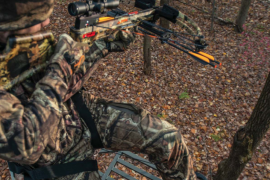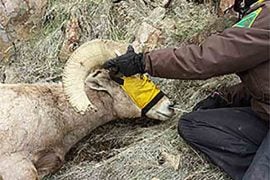

hat buck wasn’t supposed to be standing there. Not in a beanfield an hour after sunrise in October—on Tennessee public land. I have a game warden buddy in the Volunteer State who says Southern deer are so notoriously wary because, in this part of the world, “critters get got after.”
Yet, here he was—a heavy, potbellied 8-pointer standing there as if he lived on 1,000 private acres in Iowa. He wasn’t 200 yards from where I’d parked the truck, and I would’ve had a chance of killing him had I brought my bow. Unfortunately, I was just holding binoculars, scouting ahead of a hunt the following week. I could hardly wait to come back.

Bottoms Up
I was on the Hatchie National Wildlife Refuge in southwest Tennessee. Most of the refuge is pristine hardwood bottomland forest, the type of habitat that once dominated the region called the Mississippi Alluvial Valley (MAV), which follows the lower Hatchie River from southern Illinois to the Gulf of Mexico. Today, only 20 percent of the MAV’s original forest remains. The rest has been cleared for farming.
The tributary stream coursing along the northern boundary of the refuge is the only one in western Tennessee that has never been impounded or channelized. That means the refuge floods often, as nature intended. It’s managed primarily to provide wintering habitat for waterfowl, but it’s not just a big duck hole. A cooperative program between the refuge and local farmers provides hundreds of acres of corn and soybeans, of which a good portion is left standing. The woods teem with a variety of oak species, too, several of which were dropping a bumper crop of acorns during my hunt. The whole place is simply fine whitetail habitat.
What’s it cost to hunt it? You’ll need to book a motel room, since camping isn’t allowed, as well as buy the required Tennessee hunting licenses and obtain and sign a regulations pamphlet from the refuge office. Aside from that, show up during archery season and go hunting for free in unspoiled country. Mature bucks live here, and your chances of at least going home with venison in the cooler are outstanding. If you require more…





